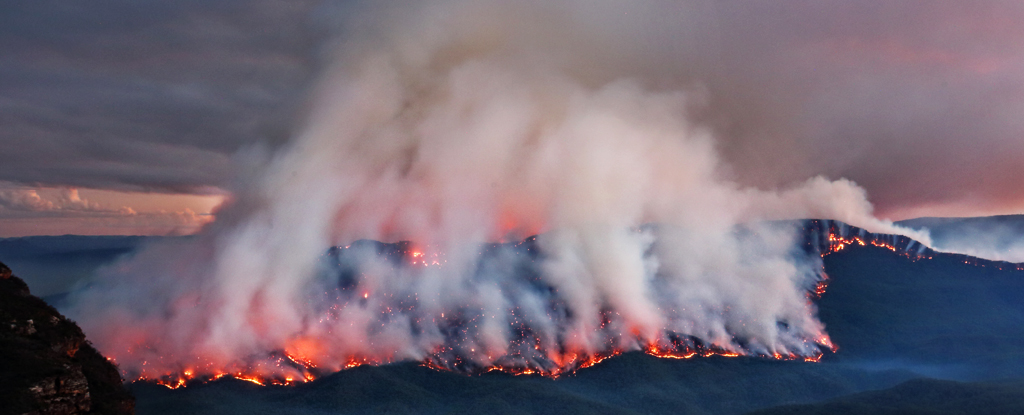Massive swathes of wilderness and the lives of billions of animals were extinguished into ash and smoke during Australia's Black Summer bushfires. The resulting haze suffocated major cities, triggered fatal health emergencies, and turned distant glaciers brown.
Now researchers have directly traced how some of this burnt biomass contributed to the largest stratospheric warming in three decades and also messed with the Antarctic ozone hole.
Combining satellite data with surface-based observations of aerosol behavior in computer models, University of Exeter statistician Lilly Damany‑Pearce and colleagues were able to detect the smoke as it floated high into our planet's atmosphere.
The fires consumed over 5.8 million hectares of life and were of such intense fury they formed their own weather systems, including smoke-infused thunderstorms (pyrocumulonimbus) that lasted for days on end.
As the researchers explain, these systems and their vortices pumped the smoke into remarkably high altitudes, with the Sun's rays heating the dark particles and causing them to rise further, in a process called self-lofting.
The first vortex, detected on 31 December 2019, reached an altitude of 16 kilometers (nearly 10 miles). Then another plume from 12 January 2020 was eventually detected up to 35 km into the sky – well into the stratosphere – and persisted for up to 2 months.
"Over the period of a month, the aerosol plume drifted across the South Pacific and was clearly detected in the stratosphere by [NASA instrument] CALIOP as well as surface-based lidars and sun-photometers operating from the southern tip of South America," the team writes in their paper.
During this time there was an abrupt global mean temperature spike in the stratosphere of 0.7 °C (1.8° F).
Anomalous temperatures persisted for four months, and the researchers' climate modeling demonstrated the temperatures could not be explained without the injected 0.81 teragrams of smoke particles the satellites detected in the stratosphere.
This was the largest temperature spike in Earth's stratosphere since the eruption of Pinatubo volcano in 1991, Damany‑Pearce and team note.
While the planet's surface cooled by about half a degree Celsius thanks to diffuse clouds of particles blocking sunlight, the absorption of infra-red radiation by particles in the stratosphere actually caused that layer of the atmosphere to warm significantly.
Aerosols from volcanoes released into the atmosphere from eruptions like this are also well known to deplete the ozone layer, and recent studies have shown particulates from wildfires can do this too.
Chemical reactions that take place on the surface of smoke particles use up ozone molecules. So the researchers mapped the vertical distribution of ozone in the southern hemisphere in 2020 and found more evidence of this smoke-induced ozone depletion.
The smoke particles wound up increasing the duration of the ozone hole over Antarctica and disrupted the Antarctic polar vortex, which usually begins to break down towards the end of spring.
"Ozone depletion serves to increase the strength of the polar vortex, via reduced stratospheric heating and thermal wind balance, providing a positive feedback that appears to delay the breakdown of the polar vortex," Damany‑Pearce and colleagues explain in their paper.
"This, in turn, contributed to the prolonged ozone hole that was observed in 2020."
The Antarctic ozone hole reached near record levels in 2020 and now we know why. The new research revealed how these smoke-induced changes then also impacted temperatures by strengthening the polar vortex. This led to the unusually cool Southern Hemisphere spring of 2020.
Meanwhile, closer to Earth's surface, more of the problematic smoke particles floated over the ocean and fell into the sea, spurring plankton into a feeding and reproductive frenzy that created a suffocating bloom of these microorganisms larger than the smoke's continent of origin.
Almost three years and several massive fires later, it's more concerning than ever to see what staggeringly large, varied and far-reaching ramifications massive plumes of wildfire smoke can have.
This research was published in Science Advances.
- Karlston
-

 1
1



Recommended Comments
There are no comments to display.
Join the conversation
You can post now and register later. If you have an account, sign in now to post with your account.
Note: Your post will require moderator approval before it will be visible.